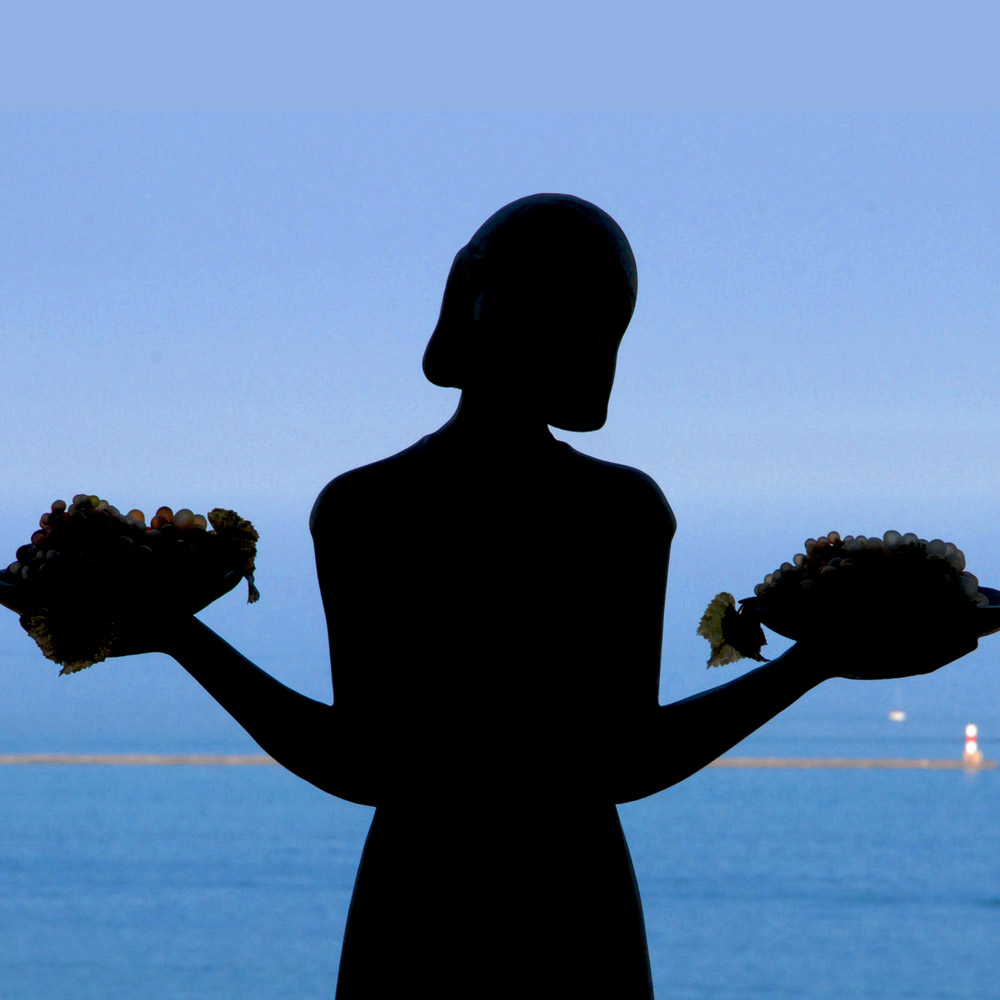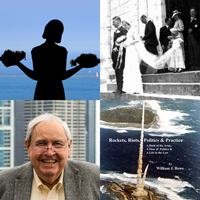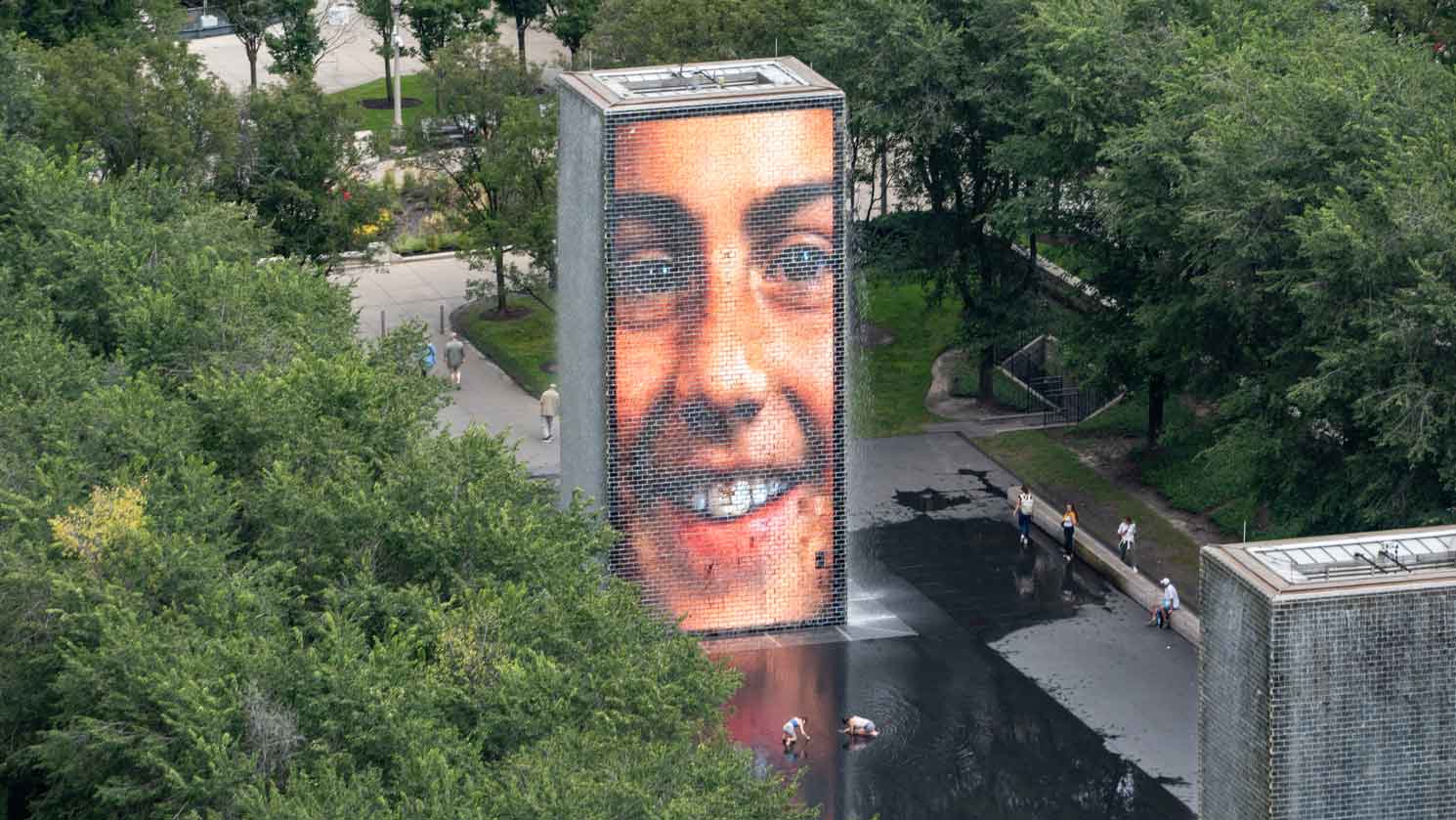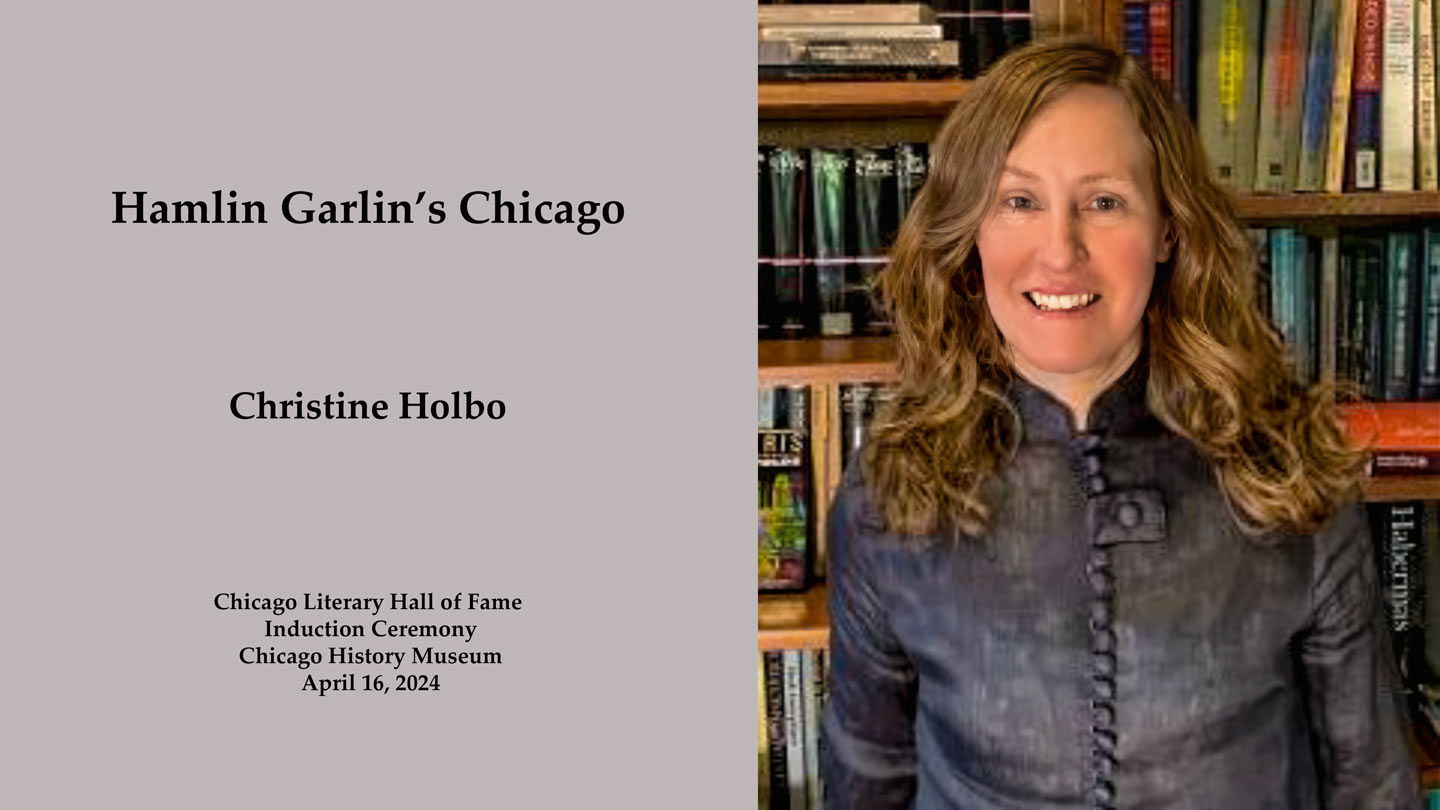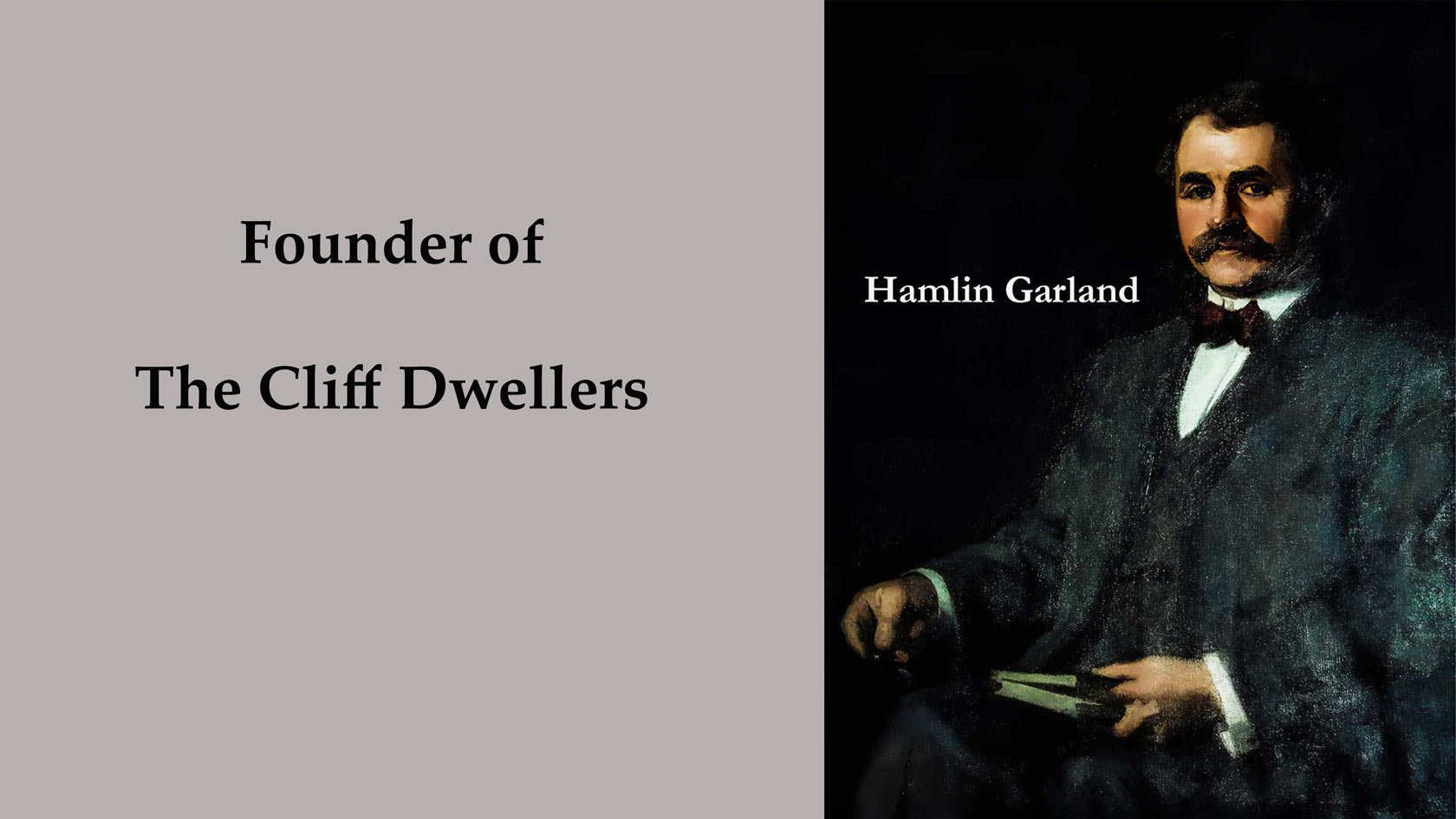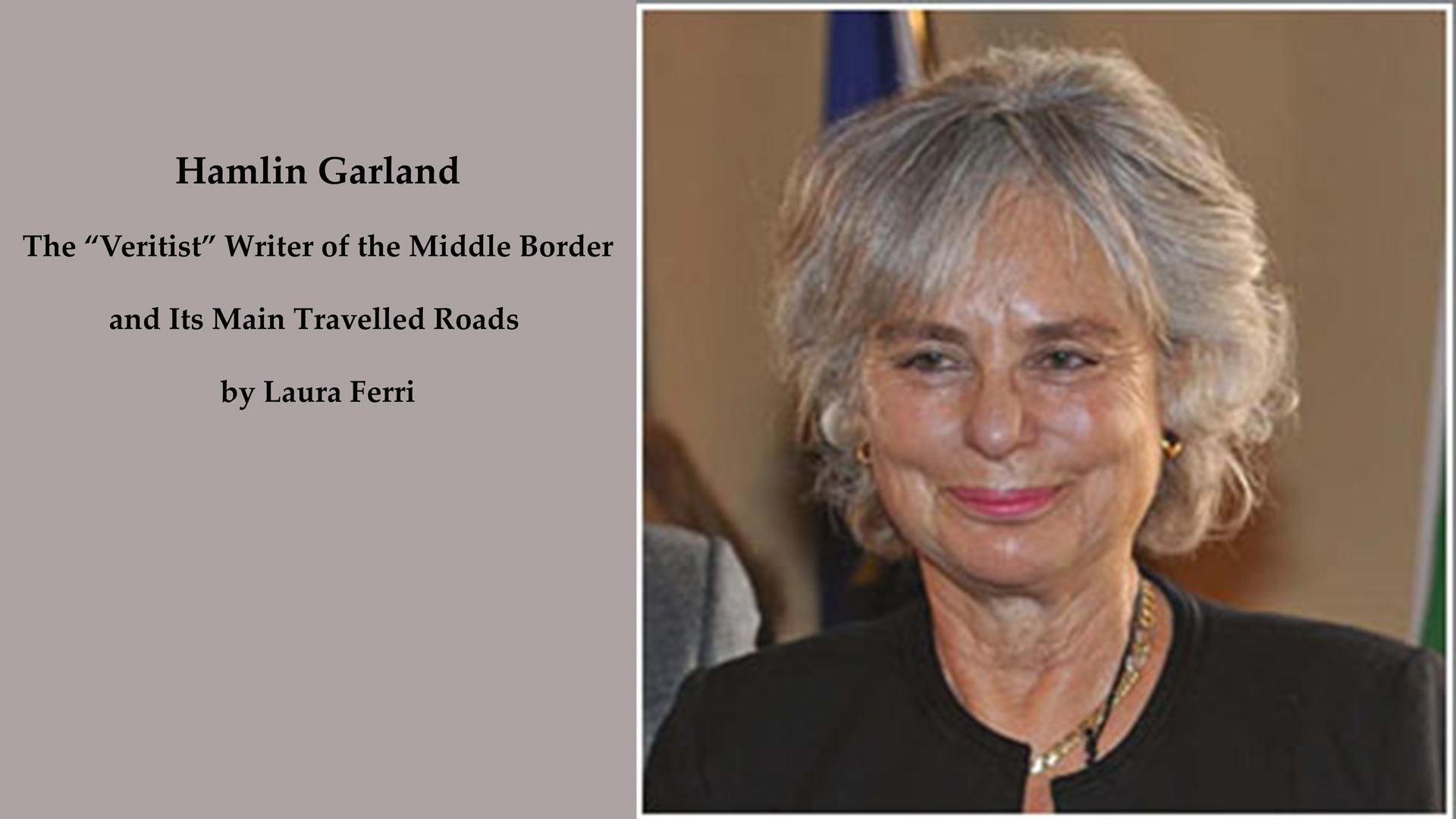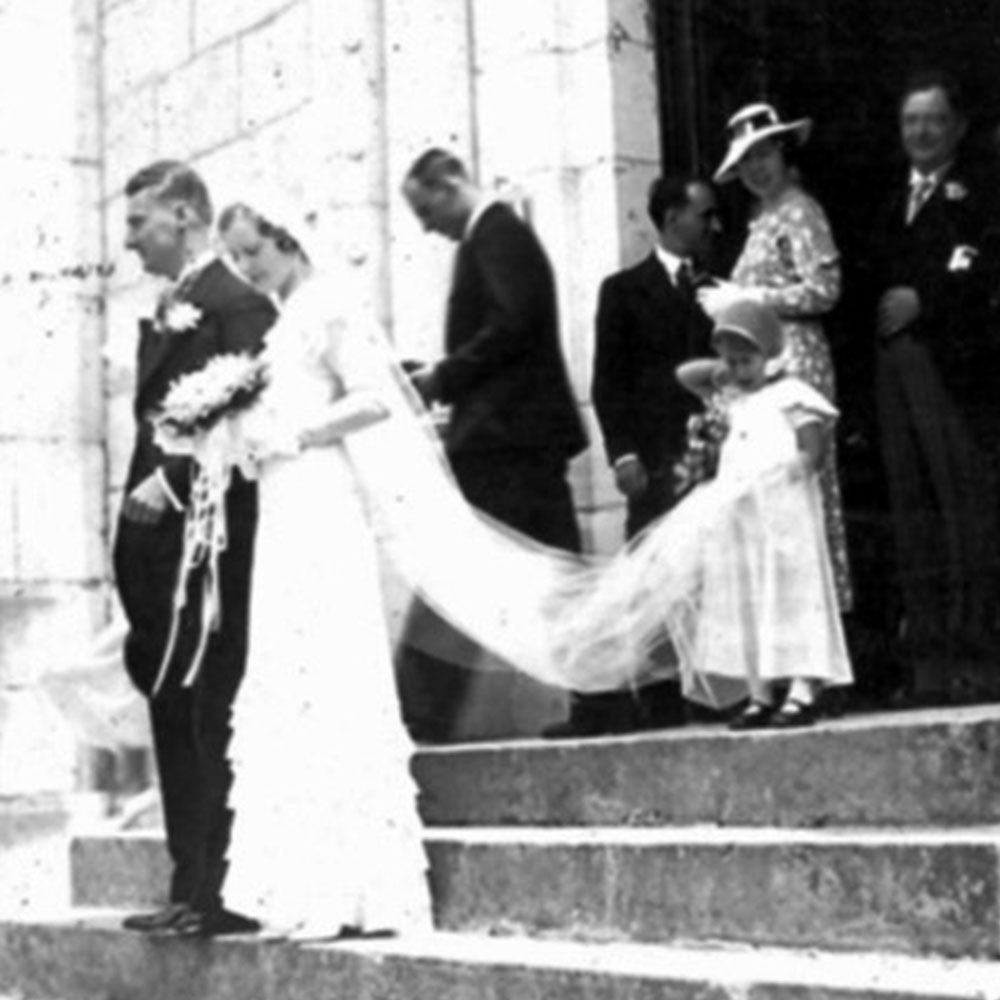Remarks of Jesse Raber on Hamlin Garland’s Place in American Literature
Although he isn’t its best-known name today, I would argue that nobody was more important in theorizing and giving shape to the late 19th and early 20th century literary movement known as the Chicago Renaissance than Hamlin Garland. That movement, the Chicago Renaissance, is sometimes said to begin in 1890 with Henry Blake Fuller’s novel The Cliff Dwellers, which was perhaps the first realistic novel about a skyscraper city. Fuller and Hamlin Garland were actually best friends, and they were both leaders of the artistic circle known as the Little Room. That was kind of the epicenter of the Chicago Renaissance, at least at that phase of it. But Fuller and Garland’s literary values were very different, and Fuller actually satirizes Garland hilariously in a novella called The Downfall of Abner Joy, just devoted to exploring their differences.
I want to bring Garland into focus by briefly contrasting these two writers, these two kinds of founding fathers of Chicago fiction. Henry Blake Fuller’s Cliff Dwellers hits on the themes that we would expect to see in an early Chicago novel. The new city, full of new money, people cut off from their roots, remaking themselves into whoever they want to be, and slipping up and down the social ladder. Early Chicago was a world of artificiality and anonymity, and it’s easy to see in this novel the precedent for novels like Theodore Dreiser’s Sister Carrie, or other novels of urban kind of anomie like James T. Farrell’s Stud’s Lonigan books. At the same time that Fuller was writing The Cliff Dwellers, though, Hamlin Garland was working on his own Chicago novel called Rose of Dutchess Cooley, which came out in 1895, and we’ll be reading from Rose of Dutcher’s Coolly in a minute. Rose of Dutcher’s Coolly is the opposite of Fuller’s novel of rootlessness. Instead, it’s about how Chicago was a place where deeply rooted people, the people of the farms and small towns of the Midwest, come together.
For Garland, Chicago was a catch basin where the best and brightest minds of the rural Midwest would gather, a place where the artistic consciousness of that whole region would be important, and recognize that artists need cities, you know, there’s no economic support for them out on the farm. So rural artists, if there was going to be a rural art at all, would have to come to Chicago, even though their artistic concerns might actually remain rural. So, Chicago would be kind of an urban base for a rural perspective, and that’s what happens in his novel Rose of Dutcher’s Coolly. A rural poet comes to Chicago and eventually learns enough about her art to really write well about her hometown back in Wisconsin. And that was kind of Garland’s story too, the rural Midwesterner who came to Chicago.
And by the way, Don Evans asked me to be sure to mention where he lived in the city, so I’m going to squeeze that in right here. He first lived near the intersection of Elm Street and Lakeshore Drive, and then later he had a townhouse in the Woodlawn neighborhood at 64th and Greenwood, if you want to make a pilgrim.
And he has a regional view of Chicago with its dynamic but somewhat tense relationship between the city and its rural hinterland. It’s a precedent just as important as Fuller’s cliff dwellers for Chicago literature. Garland’s perspective anticipates at Edgar Lee Masters Spoon River Anthology, Sherwood Anderson’s Winesburg, Ohio, and Willa Cather’s Song of the Lark, all of which have this kind of way of imagining Chicago in dialogue with a vast rural background. If Henry Blake Fuller is the patron saint of Chicago literature as an urban literature, the literature of skyscrapers, Hamlin Garland is the patron saint of Chicago literature as Midwestern and maybe even just Western literature at the time, you know, what we call the Midwest, they still call the West. So for Garland, it’s not the skyscraper but the railroad connecting Chicago with all those other places way out there that was kind of the dominating image for the city. He believed that all literature should essentially be regional, and that art with no regional consciousness was kind of artificial. He was at the forefront of a wider movement for regionalism or so-called local color in American literature, and he argued in his book Crumbling Idols that with the rise of the Midwest as America’s most economically productive region, Chicago would inevitably rise as the nation’s literary capital.
He grew up on a series of farmsteads in Wisconsin, Iowa, and South Dakota, and his own early successes work like the short story collection Many Traveled Roads established him as the voice of that region. Later, his memoirs beginning with A Son of the Middle Border would return to those places. But he was wrong about regionalism being the future of American literature. After he wrote that book Crumbling Idols, New York actually became more central, not less central, to publishing. And Garland eventually moved there, as did so many other writers of his generation who had gotten their start in Chicago and kind of put their chips on Chicago. His focus shifted away from the Midwest toward adventure stories of the far west, the southwest, and the Klondike. And furthermore, as Chicago became evermore multi-ethnic, identifying the city with the mostly Anglo-Saxon and Scandinavian rural Midwestern kind offarm boys and farm girls who came to the city made less and less sense. Nonetheless, Garland’s vision of Chicago was a city of transplants rather than a city of ruthless people, as a city that, despite all its smokestacks and skyscrapers, remains connected with far-flung little hometowns and with the big breezy atmosphere of the American West.
Well, he wasn’t totally wrong about that. Thank you.
About Jesse Raber – Jesse Raber is Head Instructor in the Poetry in America program at the Harvard Extension School. He holds a Ph.D. in English from Harvard, and has taught literature and writing classes at University of Illinois at Chicago, Loyola, and the School of the Art Institute of Chicago. He is the co-creator of the Chicago Writing Gallery at the American Writers Museum, and the author of Progressivism’s Aesthetic Education: The Bildungsroman and the Struggle for the American School, 1890-1920. His current research project is a literary history of Chicago.
[Video courtesy of Rana Segal, Ravensvoyage Productions, and Don Evans, Chicago Literary Hall of Fame]

